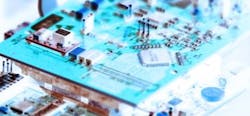Researchers consider 'time crystals' over superconductors to build quantum computers
With quantum computers, bits are no longer restrained to binary states. In classical computers, we can have bits that are either 0 or 1. These numbers are arranged into a string of bits, creating a byte. Bytes form larger structures, such as a megabyte or kilobyte and provide instructions to your computer. An example of a string of bits may be 00100110, or 01101101, and so on and so forth. In quantum computers, a bit can be 0 or 1, or a combination of these states. These malleable bits are called quantum bits or "qubits," and are extremely powerful and highly volatile.
RELATED ARTICLE: Nanoscale diamond photonic-crystal cavities store, connect quantum memories
Michelle Simmons, research head at the Centre for Quantum Computation and Communication Technology at the University of New South Wales, illustrated the potential of quantum computing in a tangible and visceral way in a recent talk. "Every time I add a quantum bit to a quantum computer, I double the computational power," she explains. "If I could have 300 qubits, that would be more powerful than all the computers in the world connected together."
Researchers are racing to add more qubits to powerful processors. At the moment, however, a 300-qubit chip resides in a future far ahead. IBM has crafted a 16-qubit processor, Google, trailing close behind, a 6-qubit one.
Both IBM and Google are utilizing superconductors to get the job done. They submerge their superconductor systems in sub-zero temperatures to allow these machines to work without producing too much resistance. While new technologies are emerging to improve sophisticated superconductors, their use in computing is nothing new. In fact, the tech startup D-Wave secured massive funding early this decade, and has been engineering expensive quantum annealing systems since 2010.
Groundbreaking research has led to another way to quantum computing, however. The use of time crystals could prove to outperform traditional superconductor systems.
Time crystals were proposed by Nobel laureate Frank Wilczek in 2012. His idea, in essence, was that since we can see spacial symmetries spontaneously break, as is the case with spatial crystals, we should be able to see this in time as well. That is, if we can have an arrangement of atoms in a certain sequence to create a form of matter, we could have an arrangement in time as well.
In the context of quantum mechanics, time crystals could act as a sort of perpetual motion machine. Elizabeth Gibney explains in her article The Quest to Crystallize Time in Nature as as a "collection of quantum particles that constantly changes, and never reaches a steady state."
The idea of synthesizing time crystals in a lab seemed theoretically impossible when Wilczek proposed the idea. However, two separate research teams--one from University of Maryland, the other, Harvard University--have successfully created and observed the new type of matter in their own labs, utilizing vastly different approaches.
"In a delicate balance between strong interactions, weak disorder, and periodic driving force," begins Observations of a Time Crystal on University of Maryland research team's site, "a collection of trapped ion qubits has been made to pulsate with a period that is relatively insensitive to the drive." Meaning, a certain sect of time crystals, discrete time crystals, can exist. "This is a time crystal," the article continues, "where the stable pulses emerge and break time symmetry—just like freezing liquid breaks spatial symmetry and forms a spatial crystal."
University of Maryland's team has tested their quantum computer, built on their trapped-ion system, against IBM's superconducting system, simulating 5-qubit machines. According to the research lead, using a simulator, "the performance is seen to mirror the connectivity of the systems, with the ion trap system out-performing the superconducting system on all results."
Breaking into the quantum age will require innovation, to be sure. The ability to create discrete time crystals may be the answer to creating more powerful quantum computing machines. At present, low-qubit chips aren't equipped to accomplish as much as pioneers in the emerging technology would like. The discovery of discrete time crystals could be the infrastructure this new type of computing is built upon, and may just be what drives quantum computing forward.
SOURCE: GISuser;http://gisuser.com/2017/11/quantum-computing-superconductors-vs-time-crystals/
About the Author

Gail Overton
Senior Editor (2004-2020)
Gail has more than 30 years of engineering, marketing, product management, and editorial experience in the photonics and optical communications industry. Before joining the staff at Laser Focus World in 2004, she held many product management and product marketing roles in the fiber-optics industry, most notably at Hughes (El Segundo, CA), GTE Labs (Waltham, MA), Corning (Corning, NY), Photon Kinetics (Beaverton, OR), and Newport Corporation (Irvine, CA). During her marketing career, Gail published articles in WDM Solutions and Sensors magazine and traveled internationally to conduct product and sales training. Gail received her BS degree in physics, with an emphasis in optics, from San Diego State University in San Diego, CA in May 1986.
